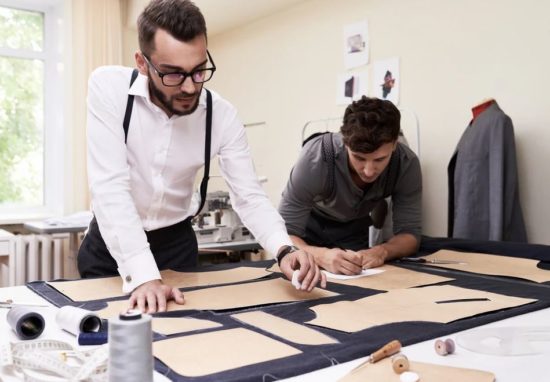
No matter who you hire to help you, there is always prep work to be done in order for them to do their job to the best of their ability. Their success is directly related to your ability to provide them with the much-needed information and tools. One of the biggest problems I see is that merging designers rarely have taken the time to prepare their design so the patternmaker can do their job successfully.
Ultimately, the pattern maker has the biggest control over the success of your brand. You want to have all your ducks in a row before you approach them. And you don’t want to know what happens when you don’t supply enough information (you can probably guess that it ain’t pretty, though). Want to avoid disaster? Follow these tips to ensure that you come fully equipped to provide your pattern maker with all of the right resources:
1. Fit model body measurements – If you have found a model that embodies your idea customer (which is really key to perfecting fit), supply all the body measurements as well as how you measured each point. Diagrams are your friend!
2. Mood board – If you created one, share it with your pattern maker! This will allow them to see your thought process in building your creative vision for the garment, and they will be better able to understand and create the product you envisioned. (for more info on mood boards, click this link).
3. Tech pack(s) – This is one of the most important steps in product development, so don’t skimp out on the details here! Your tech pack should include technical drawings, spec information, fabrications and construction methods to support the creation of a pattern, among many other important details (to learn more click here). You are likely working with a tech designer to map out the rough direction of the measurements, but as you work with the pattern maker you will be able to get more specific as the product is developed. And remember to update as more information come along.
4. Fabric Standard – Discuss and show a swatch of the fabric before the pattern maker creates the pattern. Remember the fabric affects fit. Once you have both agreed to the fabric, the pattern maker can advise the amount of fabric that needs to be purchased for when the sample makers sew up the sample.
5. Reference Samples – A fit sample that you feel is the right fit (usually the medium-most size) and any other store-bought sample. This is the most effective way to show what outcomes you would like for the design and how it’s meant to fit. This will help guide the pattern maker so they can create your designs to a tee!

If you’re spending your time doing research, you should be able to convey what your design requirements are, while working with a pattern maker to get their input on how to improve the style. As a designer and entrepreneur, be sure to work out the smaller details (spec information, fabric resourcing, etc.) on your own so that you’re prepared to work seamlessly with your pattern maker. Only then will you be ready to move forward with a pattern maker and start creating the perfect
P.S. Need a pattern maker? Check out our sourcing directory to find one closest to you. Click here.
Designer entrepreneurs – what are your thoughts? How was your experience the first time you partnered up with a pattern maker? Any tips to help your fellow designer friends?



